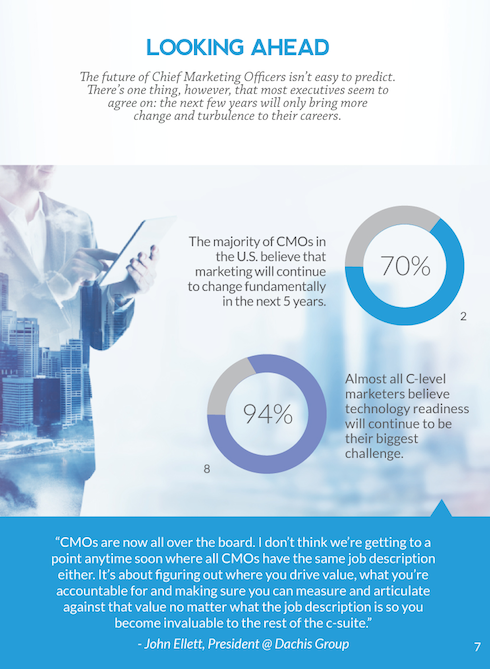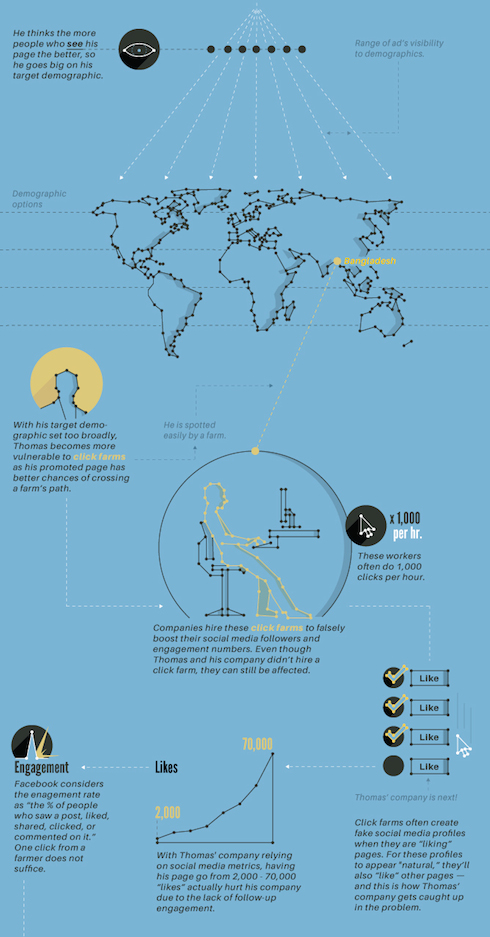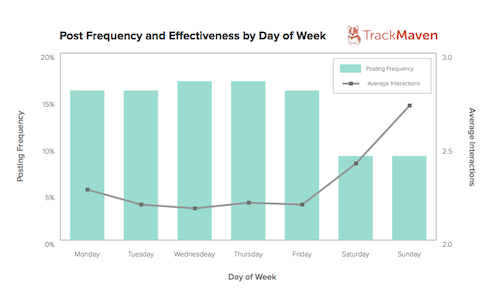By Liam Dowd - June 17th, 2014
Failing to measure social media, Facebook fraud and what makes a good CMO?
What makes a good CMO?
The chief marketing officer in your corporation has seen their role radically change over the last few years, as social media has become the focus for much of the activity they manage.
A new infograohic from Uberflip places the role and the duties of today’s CMO into context. Understanding the role of a chief marketing officer in 2014 isn't easy. There’s the digital marketing landscape taking over on one front that is changing how business is conducted and revenue generated, and ever-growing corporate accountability on the other. Customers have taken control of the brand conversations and the rules of marketing are changing. What used to work 10 years ago isn't as effective anymore.
- 53% of CMOs feel the biggest change to their team's responsibilities is an increased pressure to enable revenue growth (Deloitte).
- Companies that align their marketing and sales teams experience an average of 20% growth in annual revenue (Aberdeen Research).
- 70% of CMOs say marketing will change fundamentally in next 5 years (Accenture).
Failing to measure social
Digital ad agencies often boast that they have been working successfully in their market sector, and have the stats to prove it. A new infographic from Sempo however, seems to show that marketing agencies may be highly successful at what they do, but this success doesn’t include measuring social media performance.
According to Sempo’s research, more than a third (35%) of companies say their ability to measure mobile is poor, and more than half (51%) say they have problems measuring ROI from the social media channels they engage with. This is odd, as three-quarters state they use social media as part of their marketing activities. It seems that they are falling at the last hurdle and don’t have in place systems to track how they are using social media, and what results this is bringing to the corporations they work with.
How to avoid Facebook fraud
Many corporations have been evolving their use of Facebook as an ad platform since its IPO. As with all forms of digital advertising, businesses must take care to avoid potential fraud that can be highly damaging. Vertical Measures has looked closely at this issue and says:
“Companies are often drawn to advertising on Facebook to increase visibility of their brand. That visibility can reflect poorly on a company if it's tied to click farms that employ low-paid workers to "like" company pages. Through the following example, learn more about what click farms are, why they are harmful, and how we can better avoid them.
“A key takeaway is: Know your audience and choose quality over quantity with your paid Facebook ads' demographic reach. By choosing the right demographic and staying away from click farms, you reduce your ads' visibility in risky regions and get a more engagement metric on Facebook.
Avoid these common farming locations. Mexico, Brazil, Portugal, Egypt, Nepal, Bangladesh, Philippines and Indonesia.”
For brands it is important to pay attention to potential fraud not only from a commercial perspective, but also to protect brand values and reputation, both of which are highly lucrative currencies across the social media space.
Facebook timing
A new report from TrackMaven illustrates that to be successful with social media, corporations not only need to create great content, they also need to be savvy when it comes to the timing of these posts.
TrackMaven concludes: “When we look at the frequency of Facebook posts by day of the week, we can see that the frequency of posts is roughly the same throughout the workweek from Monday through Friday. Thursday is the most popular day to post by a small margin with 16.82% of all posts, with Tuesday and Wednesday close behind with 16.47% and 16.62%, respectively.
“Posting frequency drops nearly in half over the weekend, with only 9.04% of posts published on Saturday. Sunday is the least popular day, accounting for only 8.73% of total Facebook posts. Although most marketers are focused posting on Facebook during the workweek, the average number of interactions shows they can benefit outside of their schedule.
“The graph below shows the frequency of posts by day of week [Teal], and the average interactions per post [Grey]. Looking at the distribution of posting frequency, we can clearly see the disparity in posting between the workweek and the weekends, with a significant drop in posting frequency on Saturday and Sunday. However, the average number of interactions per post shows the opposite trend.”
What is clear is that posting during the working week may not be the optimum time to reach the audience your corporations wants to engage with. Experimentation is the advice here to ascertain when your key advocates are using Facebook.
Until next time….
The Useful Social Media team.
Next Reads
September 2014, San Francisco
Use social to get closer to your customer. The Corporate Social Media Summit is your one-stop-shop for all the latest social media insight and best practice.
Brochure Programme


